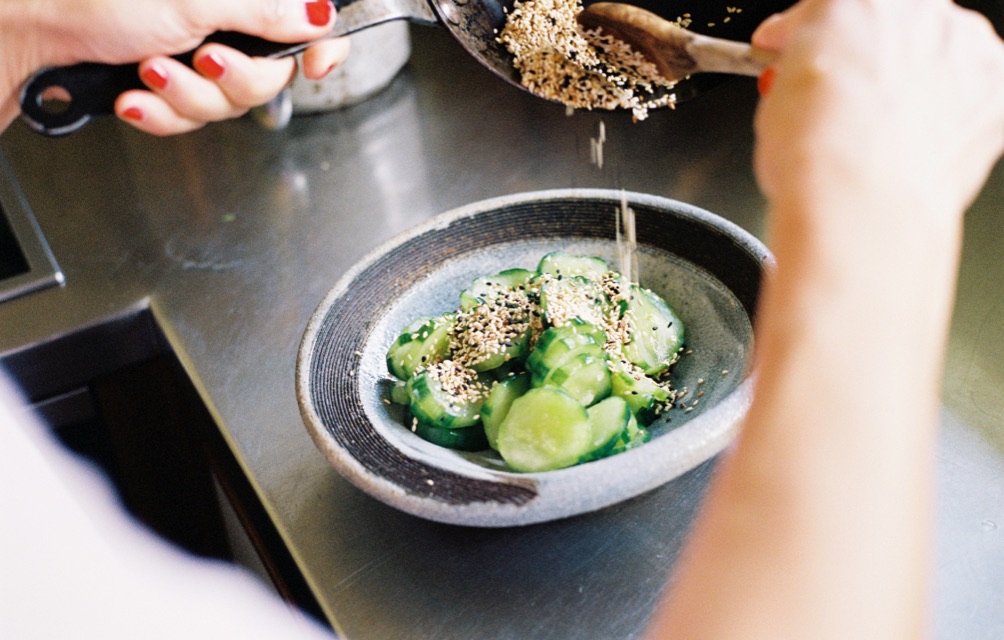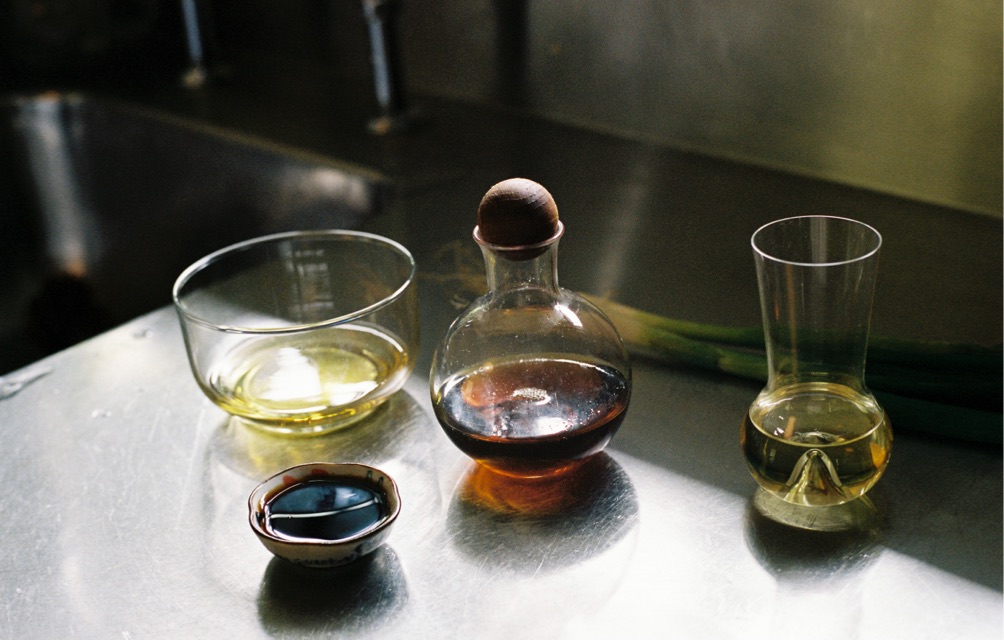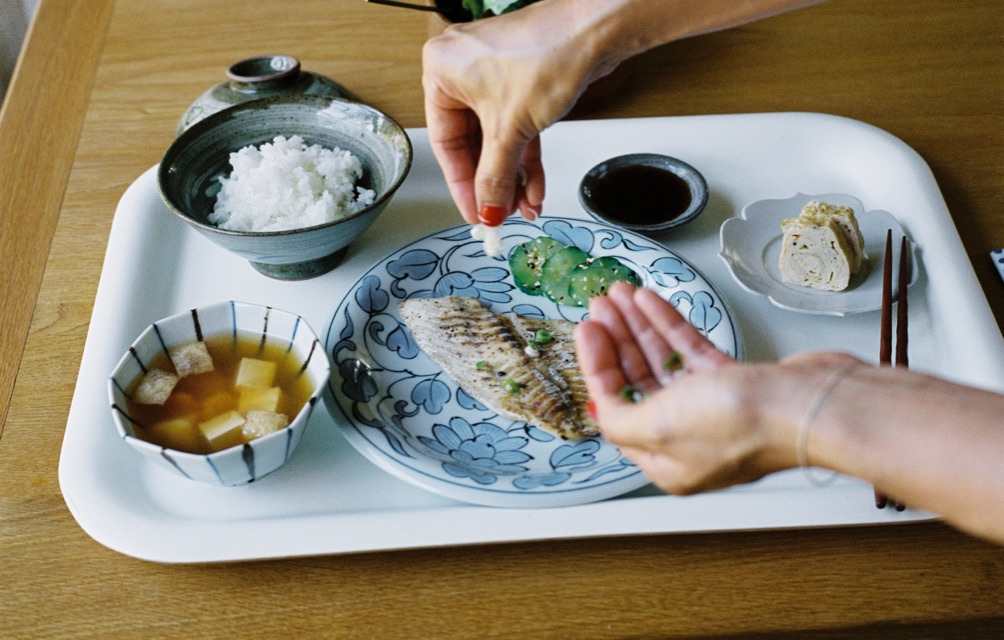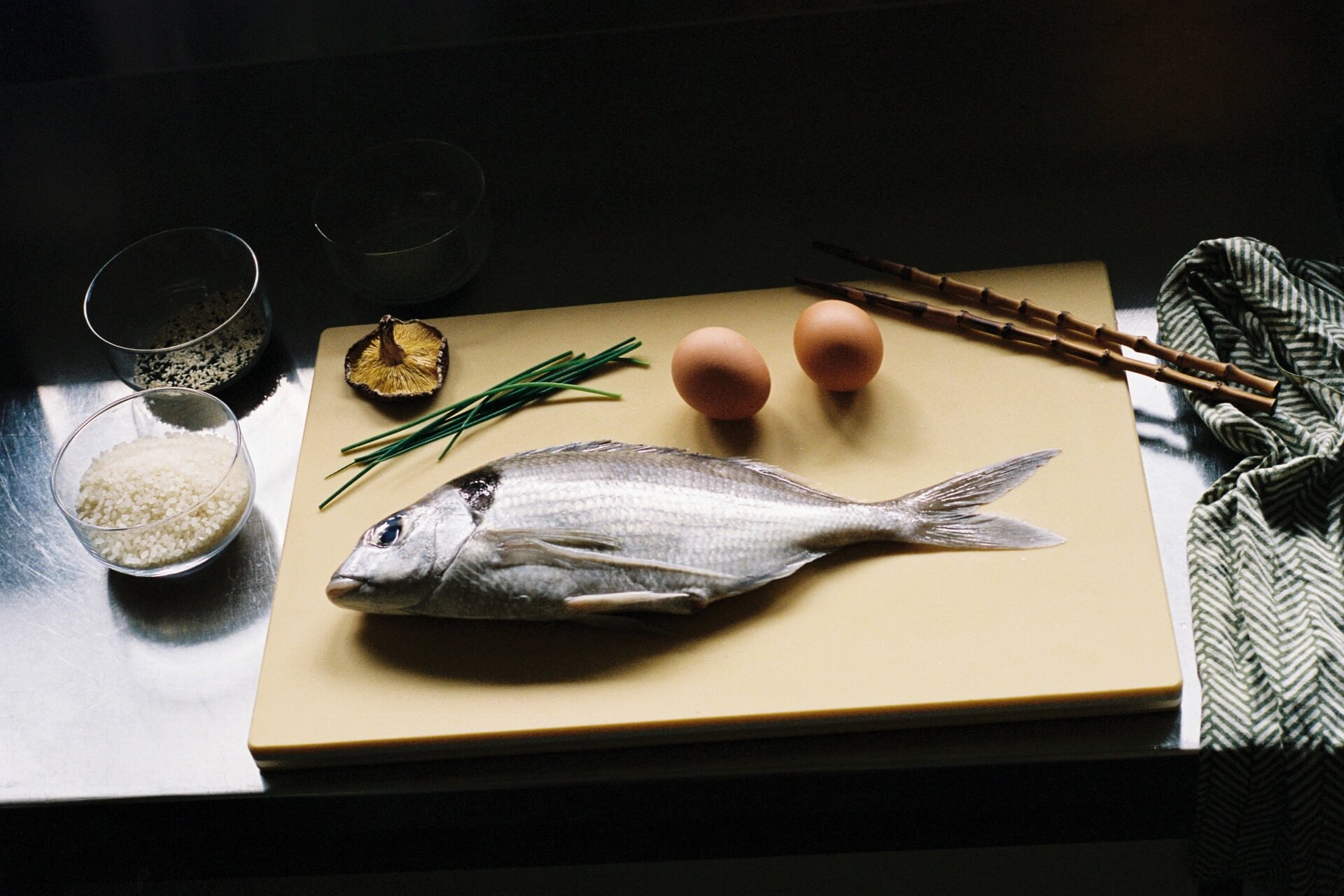Mar 26, 2024 Food
A steaming bowl of rice is served straight out of the pot. Miso soup, gentle and comforting, is already on the table. A lightly grilled fish and crunchy seasonal pickled vegetables will be eaten with the rice, along with a sweet, creamy dashimaki tamago — a mille-feuille omelette rolled with dashi. This Japanese breakfast is perfectly balanced with carbohydrates, protein, fat and essential nutrients to fuel the day. It is both filling and light, savoury and sweet, seasonal and structured. The meal is usually presented on a large tray that holds plates and bowls and a set of chopsticks, resting, ready to go.
To those thinking that this is a meal served on most mornings in my house, don’t let these images fool you. In our household, as in many Japanese households around the world, it’s a bowl of cereal or oatmeal with yoghurt and fruit, a piece of toast with an egg, and pancakes on the weekends. And to be completely honest, my non-Japanese husband is in charge of breakfast on most mornings. Japanese breakfast has become obsolete in our busy lives, replaced by Western foods that are fast, convenient, and practical.
The traditional Japanese breakfast is an outdated, anti-feminist meal from the days when women — mothers, grandmothers and aunties — would wake up before the family to cook and serve a hot meal. Even in Japan, where the nuclear family is still the cultural ideal and antiquated gender roles continue to exist, Japanese breakfast no longer fits within the framework of patriarchy and misogyny deeply rooted in the culture. Approximately 54% of women (of legal working age) participate in the labour force; those numbers are growing due to better-late-than-never government efforts that support working mothers. A recent survey by Benesse Group indicates that Japanese mothers are unhappy with their work–life balance, often juggling work, childcare and household duties without the help from husbands, extended family or the communities that they live in.
So it’s a piece of toast in the morning — and that’s okay.
Japanese breakfast has morphed and modernised over the years, but the ritual is not entirely gone. These days, the morning meal is rarely made at home, but reserved for weekends away. Ryokan (traditional lodges) and hotels have reconceptualised the meal in its current form — decadent, abundant, immaculate — with impressive variety and luxurious presentation. Preparing the breakfast is an opportunity for the chef to highlight the beauty and bounty of the region with the use of local meat and fish, to introduce small-scale producers of rice and soy sauce and to feature local makers of traditional ceramic and wood crafts. Especially for domestic travellers, itineraries centre obsessively around good food, and this includes Japanese breakfast.
On a recent writing assignment at Aman Tokyo, a five-star luxury hotel considered to be one of the best hospitality experiences in the world, I ordered the Japanese breakfast to my room. It was my first morning back in Japan in half a year, and I was craving the comforting flavours of my motherland. The lush breakfast that arrived — for a casual ¥6,490 (a bit more than $70) — consisted of 14 dishes:
rice
miso soup
grilled salmon
pickled vegetables
dashimaki tamago
spicy cod roe
chirimen sansho (dried sardines and Japanese peppercorn)
simmered chikuwa fish cake
octopus and vegetables (bamboo shoot, nanohana greens, green pepper, eggplant)
simmered pork
vegetable dumpling
pork and Chinese cabbage, yuzu kosho (fermented chilli peppers and yuzu peel)
marinated sea bream sashimi, wakame seaweed
and orange slices
presented in three tiers. The bowls of rice and miso soup are always placed at the forefront, closest to the body, and the side dishes sit back, but within easy reach of chopsticks. Each dish was plated appropriate to the serving size and consistency of the ingredient, and garnished with simple, seasonal cues and colours. Tying the meal together, the dark-hued, understated ceramic dishware let the food speak for itself. I ate it sitting next to floor-to-ceiling windows overlooking the Imperial Palace and sprawling gardens — I could see all the way to snow-capped Mount Fuji on the horizon, basking in the rising sun.
The Japanese breakfast is a humble offering in Mother Tongue, my book about Japanese family and food, released in 2021. I wrote it in 2020, during the Covid-19 pandemic, when — looking for familiar flavours during an unsettling time — I cooked through my mother Kozue’s cookbook, My Mother’s Love, based on my grandmother Fusae’s recipes. I found myself simplifying the recipes and finding substitutions to make the recipes work for a home cook living outside of Japan.
Based on the principle of ichijyu sansai (one soup, three sides), an important approach in washoku (traditional Japanese cuisine), the Mother Tongue version of the Japanese breakfast is simply rice, miso soup, grilled fish, dashimaki tamago and pickled vegetables. The ingredients for it can be found at supermarkets and Asian grocers, and I urge you to choose fish, eggs and produce from local sources that use sustainable forms of fishing and farming. In this meal, I used white rice, as well as tofu, fried tofu skins and carrots in the miso soup. Snapper or salmon works well for the grilled fish, and shiitake mushroom dashi in the dashimaki tamago gives a rich earthiness to the rolled omelette. My pick of vegetables to pickle during the summer months are cucumbers, offering a welcome crunch in texture.
The Japanese breakfast in Mother Tongue does not need to be eaten in the morning. For the shoot, photographer Harry Were, interior designer and stylist Katie Lockhart and I worked during the one window we were all available, a Sunday afternoon. Harry brought Ida, her six-month-old daughter, whom she breastfed between shooting. Katie’s daughter Grey had tea with us, then returned to playing games and chatting with her friends, letting her mom work. Katie held Ida if she was fussy (rarely) during a shot, as well as setting up, styling and helping me clean afterwards. Then we all sat down for Japanese breakfast — the perfect Sunday-evening meal with my dear friends.
–
JAPANESE BREAKFAST RECIPE
White Rice
Serves 2
Short-grain Japanese white rice, 1 cup
Water, 1¼ cups, plus more for washing
Wash rice to remove dust and surface starch. Fill bowl with water and swirl rice, then drain off the milky-white water. Repeat until water is more or less transparent.
Soak rice in measured water for 30 minutes in the summer, one hour in the winter.
Cook rice with lid on, on medium heat. Aim to bring to boil in about 10 minutes.
Continue on low heat for 15 more minutes, then remove lid and check moisture.
Remove from heat. Keep lid on and steam for 10–15 minutes.
Uncover the pot and fluff rice with a rice paddle or serving spoon before serving.
Miso Soup
Serves 4–5 (enough for seconds)
Dashi, 5 cups
Silken tofu, 1 small block cubed
Tofu skins, small handful
Carrot, 1 small sliced
Miso, 3–4 tbsp
Spring onions, chopped, for garnish
Prepare homemade dashi, or make from pre-made powder or liquid by following the directions on the packet.
Add in tofu, tofu skin and carrots, and cook until carrots are tender.
Take off heat, add miso and taste before serving. Every miso is different, so use your judgement here to adjust and finish the soup.
Garnish with spring onions.

Quick Pickled Cucumber
Serves 2
Cucumber, 1 (Japanese or any other crunchy variety with not many seeds)
Salt, ½ tbsp
Soy sauce or tamari, ½ tbsp
Rice wine vinegar, 1 tsp
Sesame seeds, for garnish
Cut off the ends of the cucumber, peel skin in stripes length-wise, leaving half of the skin on.
Slice straight or diagonal. The thinner the slice, the quicker it will pickle. The thicker you slice, the crunchier it will be.
Add the cucumber slices to a bowl and massage with salt; leave for 30 minutes to 1 hour while you cook the rest of your meal.
Drain excess water, pour the mixed soy sauce and vinegar over the cucumber.
Garnish with toasted sesame seeds to serve.

Dashimaki Tamago
Serves 2–3
Eggs, 4–5
Dashi, 1 cup
Salt, a pinch
Oil, for cooking
Daikon, grated, for garnish
Soy sauce, for garnish
Break the eggs into a large bowl and lightly beat without incorporating too much air.
Pour the dashi and a pinch of salt into the eggs and stir together thoroughly while trying to limit the number of bubbles that form.
Heat a non-stick pan over medium heat, pour the oil into the pan and spread evenly to coat the pan. Pour about a quarter of the egg mixture into the pan and cook. As bubbles come up, pop them with your saebashi (cooking chopsticks).
When the egg is half-way cooked (but there’s still some liquid egg on top), gently flip the left quarter towards the centre of the pan and then repeat with the right quarter.
Then roll the folded dashimaki tamago from the edge closest to you towards the back of the pan. When you reach the edge, slide the roll back to the edge closest to you, keeping it neat and compact on the edge of the pan.
Use an oil-soaked paper towel to grease the empty part of the pan and pour another quarter of the egg mixture into the pan. Gently lift the cooked roll from the edge facing away from you and let the raw egg mixture run under the roll.
Repeat steps 4 to 6 until you’ve used all the egg. Gently remove from pan and cut into discs. Serve immediately, garnished with daikon and soy sauce.

Grilled Fish
Serves 2
Fish, 2 fillets
Sake, 2 tbsp
Sea salt, ½ tsp
Oil, 1 tbsp of neutral-flavoured oil, such as rice bran or sunflower oil
Soy sauce, 1 tsp, for garnish
Coat the fish with sake on both sides, which counters the fishiness. Discard the sake, pat the fish dry, and place on a baking tray.
Salt the fish on both sides.
Rest the fish while you preheat the oven to 215°C.
Pat the fish dry to remove excess moisture from the salt.
Heat oil in a pan and fry the fish, skin side down, on medium-high heat until skin is golden-brown.
Transfer the fish to a baking tray and grill for 10–15 minutes.
Serve immediately. Soy sauce can be drizzled on top of the fish or on the side.






